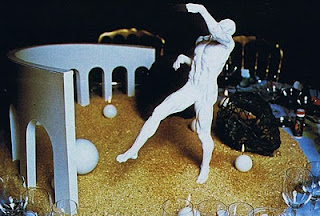Many of Savoir Faire’s followers are aware that I grew up in Australia in a very small country town in the middle of nowhere. A small village of 1500 people nestled in rolling countryside with a strong historical past.
 The town is a virtual time capsule which attracts tourists (luckily not too many), wine lovers (great vineyards in the area), historians, artists and just the curious. The main basis of the town as we know it today was the fact that gold was discovered in 1870, and at one time the town boasted a population of over 20,000. The gold petered out, the people left and the town settled down to become a farming community based on sheep and wheat.
The town is a virtual time capsule which attracts tourists (luckily not too many), wine lovers (great vineyards in the area), historians, artists and just the curious. The main basis of the town as we know it today was the fact that gold was discovered in 1870, and at one time the town boasted a population of over 20,000. The gold petered out, the people left and the town settled down to become a farming community based on sheep and wheat.


Another claim to fame of the town was that it was the home for a time of one of Australia’s noted authors, Henry Lawson. Images of the town during the gold rush and Lawson were featured for many years on the Australian $10 bill. This has led to the dubious distinction of being known as the Ten Dollar Town.


Not much in the town has changed thanks to a very strict conversation policy which has preserved many of the town’s older buildings including the 5 pubs that cater to the small population. Walking down the main street is like going back in time.

Wonderful colonial Australian architecture still abounds and it is still a pleasure to go and admire the details and spend some time under these cool verandahs in summer, when the temperature can be over 100.
 The town even boasts an Opera House called the Prince of Wales Opera House.
The town even boasts an Opera House called the Prince of Wales Opera House.
 The town even boasts an Opera House called the Prince of Wales Opera House.
The town even boasts an Opera House called the Prince of Wales Opera House. Mind you growing up in the middle of nowhere is not easy for teenagers, and one could not wait to escape the confines of the town and head for the big smoke and bright lights of Sydney.
Mind you growing up in the middle of nowhere is not easy for teenagers, and one could not wait to escape the confines of the town and head for the big smoke and bright lights of Sydney.

Now the tide has turned and one always looks forward to visiting one’s home town, which Savoir Faire will be doing on Saturday. After a marathon flight from Toronto, via Shanghai to Sydney, Savoir Faire then boards a train, and then changes to a bus, to then be met by one’s mother at the old railway station and then home!
 The purpose of the trip mainly being to attend the wedding of one of my nieces. This particular niece’s fiancé, proposed to her on top of the Rockefeller Centre in New York last year one evening while they were on vacation. How romantic and full of style is that?
The purpose of the trip mainly being to attend the wedding of one of my nieces. This particular niece’s fiancé, proposed to her on top of the Rockefeller Centre in New York last year one evening while they were on vacation. How romantic and full of style is that?So Savoir Faires for the next two weeks I will be incommunicado enjoying the relaxation of home!





























































